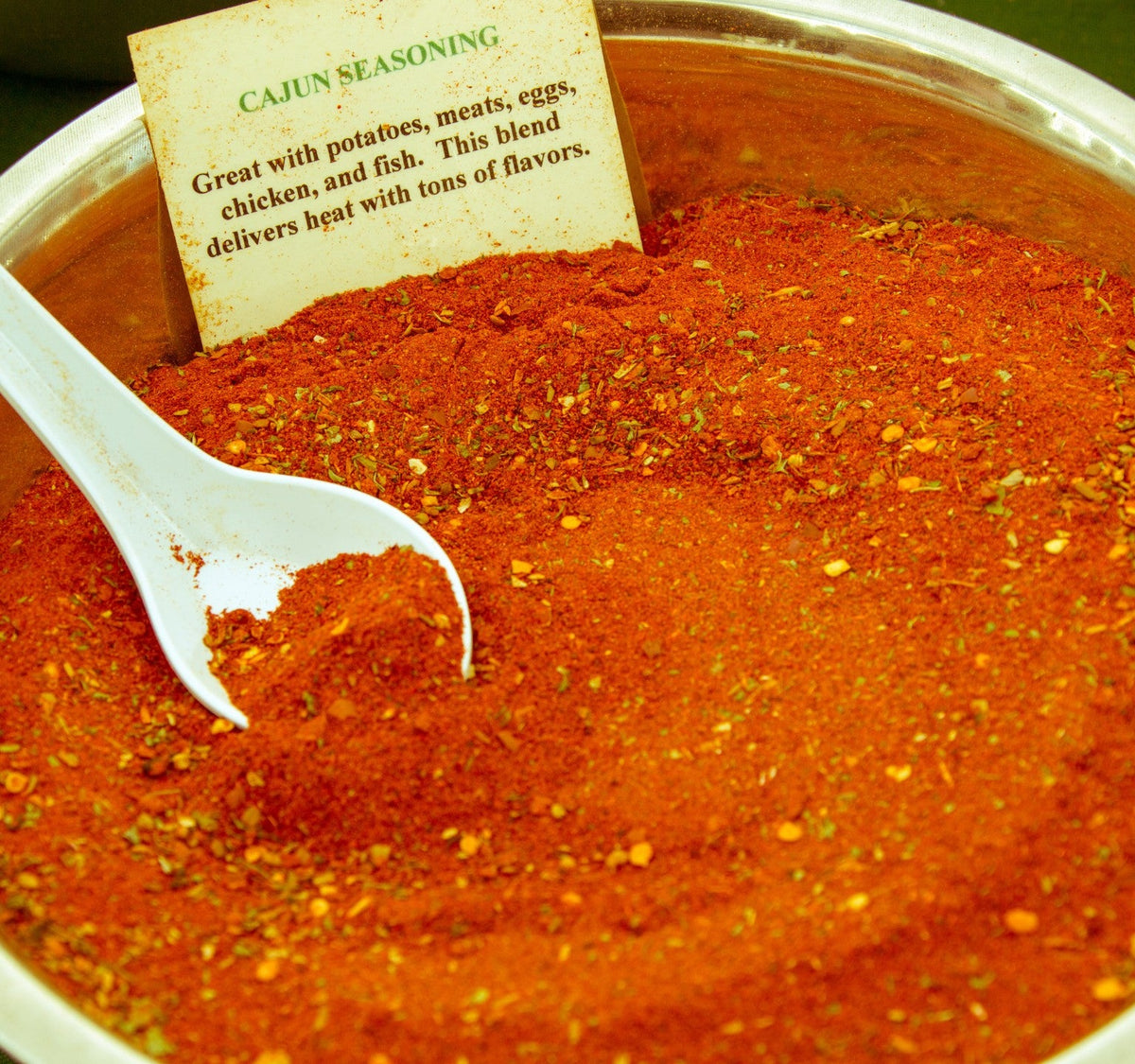
Cajun Seasoning: The Definitive Guide
|
|
Time to read 3 min
|
|
Time to read 3 min
Brick red heat with kitchen soul. Cajun seasoning captures Louisiana’s pantry logic: paprika and cayenne for color and fire, garlic and onion for body, black and white pepper for bite, with oregano and thyme drawing the herbal line.
It threads through jambalaya, gumbo, and shrimp suppers, often riding the “holy trinity” of onion, celery, and green bell pepper.
KAIJU-N keeps that core and adds a quiet Japanese brightness from yuzu, kombu, and dulse, set up for high heat and a clean, mineral finish.
Products mentioned in this article
Table of Content
Cajun seasoning is a Louisiana-born blend built on paprika and cayenne with garlic, onion, black and white pepper, and often dried thyme and oregano. Salt appears in many commercial formulas; salt-free versions are common in kitchens.
Both cuisines share roots yet read differently on the plate. Cajun mixes lean pepper-forward heat. Creole mixes tend to skew more herbal. Lines blur in practice, but this is the broad pattern.
Many Cajun dishes start with onion, green bell pepper, and celery. This Louisiana analogue of French mirepoix underpins gumbo, jambalaya, and much more, and was popularized in modern times by Chef Paul Prudhomme.
KAIJU‑N is our premium Cajun composition. Classic paprika, garlic, onion, cayenne, black and white pepper. Then a a Japanese mineral and vitamin boost from yuzu zest, kombu, and dulse. Toasted sesame and shiitake bring mineral umami. Organic. No fillers. Built for high‑heat searing and oven work.
Best uses with KAIJU‑N
Poultry: hot roast or pan sear.
Seafood: grill or cast-iron.
Vegetables: sheet-pan roast.
Rice pots and one-pan suppers.
See live applications:
La Botanique Sacree created a smart infusion of Japanese superfoods with a traditional Cajun Backbone
General ratio. A common kitchen baseline is about 1 tablespoon of seasoning per 450–500 g protein. Adjust for cut, fat, and salt content.
Blooming for depth. Ground spices release fat‑soluble aromatics when warmed briefly in oil. This step spreads flavor and builds a rounded finish.
With sausage or salty meats. Reduce added salt or use a salt‑free blend. Cajun mixes frequently include salt. Our blend includes moderate salt so you have the liberty to salt to taste.
Storing your spices. Keep tightly sealed in a cool, dark place. Ground spices show best quality for roughly 2–3 years; potency drops over time.
Want to create your own homemade Cajun Seasoning? (Salt Free)
Yield: 100 g
Ingredients
40 g sweet paprika
10 g smoked paprika
12 g garlic powder
12 g onion powder
8 g black pepper, fine
4 g white pepper
6 g cayenne pepper
4 g dried oregano
4 g dried thyme
Method
Whisk to a uniform red. Store airtight, cool, and dark. Quality window 2–3 years; check aroma for fade.
Salted variant
Add 8–12 g fine sea salt per 100 g base and mix well. Remember that many commercial blends include salt.
Is Cajun seasoning gluten free?
Single‑ingredient spices are naturally gluten free. Blends can include added ingredients or face cross‑contact. “Gluten‑free” on labels is a voluntary claim with defined rules; certified products and careful label reading provide assurance.
Cajun or Creole for jambalaya and gumbo?
Both appear in Louisiana kitchens. Cajun styles often show peppery heat and one‑pot rusticity. Creole styles tilt more herbal and can include tomato or butter‑based elements.
Why does the base of so many recipes taste similar?
The “holy trinity” of onion, bell pepper, and celery forms the aromatic base in many Louisiana dishes, similar to French mirepoix.
How long does a homemade blend last?
Flavor is best within 2–3 years for ground spices when stored sealed and away from heat and light.
For the pantry: KAIJU‑N Cajun Seasoning . Organic. Clean label. Built to travel from cast‑iron to sheet pan without losing its nerve.


